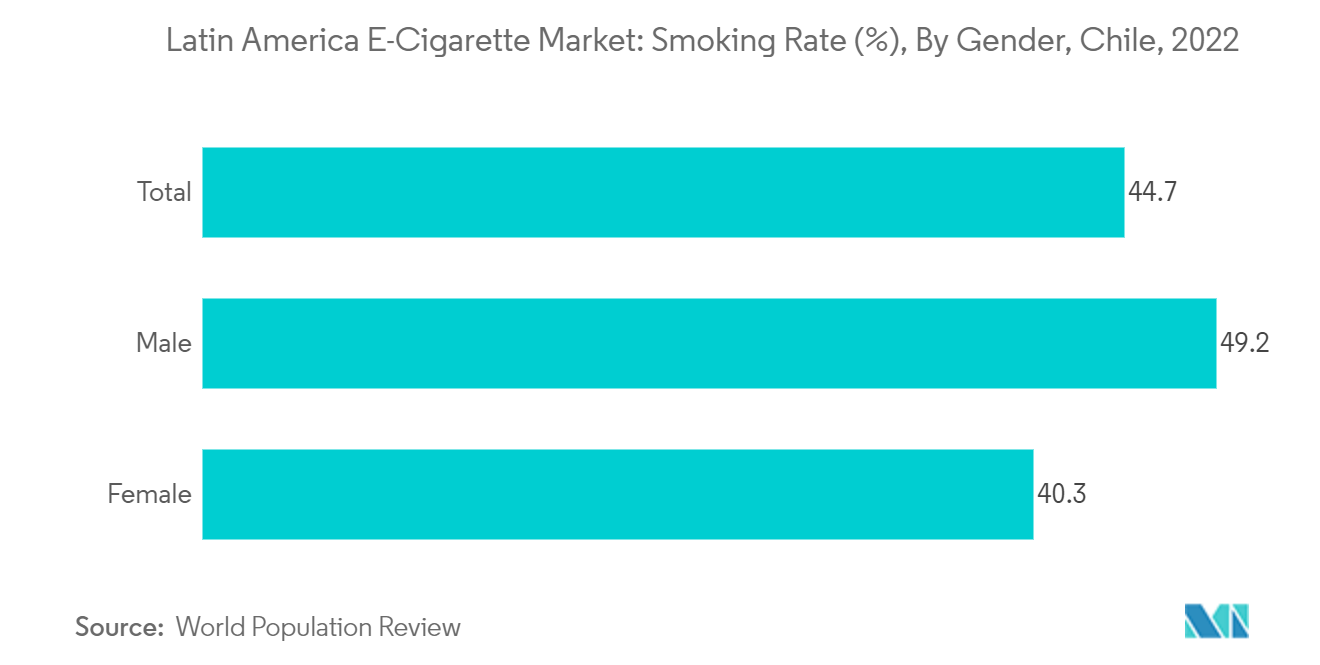Market Trends of Latin America E-Cigarettes Industry
This section covers the major market trends shaping the Latin America E-cigarettes Market according to our research experts:
Rising Prevalence of Smoking among Young Population
- Almost all tobacco usage begins in childhood and continues throughout young adulthood. The Frontiers in Public Health journal 2021 reports that in Brazil, approximately 24 million people smoke, and 16.9% of the population have used tobacco at some point in their lives. There has been a decline in smoking prevalence in Brazil in the last decade in all groups except for individuals aged 18-24.
- Moreover, changing physical, behavioural, and social characteristics accompany adolescence into adulthood, including tobacco use. In many countries around the Latin America region, illicit drugs, such as tobacco, are among the most commonly used substances. They are generally the second substance an individual tries out due to curiosity, a desire for acceptance in a group, or an urge to rebel against the establishment.
- Additionally, while direct marketing to minors is now prohibited by law, the tobacco industry continues to develop, package, and advertise its products in ways that appeal to the rising number of the younger population in the region. In addition to that, companies are innovating new products according to health and wellness, consumer preferences, etc. Since the sales of e-cigarettes are limited to a few Latin American countries, the distribution of these products is also limited by a few private companies such as Innokin Technology and KangerTech.

Chile Holds Significant Share
- According to World Population Review, Chile has the fifth-highest smoking rate with 44.70% in the world and the highest in Latin America. The Institute of Clinical and Health Effectiveness reported that in 2021, smoking had a direct cost of more than USED 1 billion alone in direct costs (treatments, hospitalizations, surgeries, medicine) to the Chilean government.
- As a result, the expenditure is equivalent to 0.8% of annual GDP and is 30% in excess of the amount collected from tobacco taxes yearly. Considering this fact, e-cigarettes are considered less toxic and safer than conventional tobacco cigarettes, making them a viable alternative.
- A research study concluded that the people who smoked only e-cigarettes had similar levels of carcinogens to people using nicotine-replacement therapies and had much lower toxicity levels than people who only smoked cigarettes. The reduced toxicity levels and cost concerns are expected to drive the e-cigarette market in Latin American countries.


